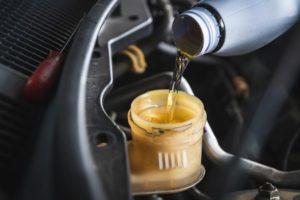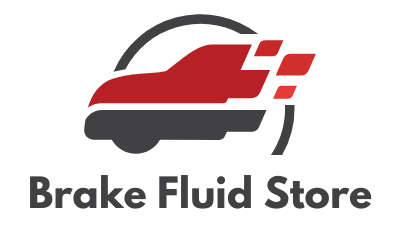Brembo brake fluid contains higher boiling points that exceed industry standards. They offer excellent resistance to vapor lock and create efficient braking even when temperatures are low, contain a high anti-corrosion property, and resist oxidation. This brake fluid is designed to preserve its integrity over the long term. Discover the advantage of Brembo brake fluid in the following article.
Contents
Brembo Offers a Complete Solution

Brembo has a complete range of products to meet each vehicle’s needs in terms of brake fluids. They also exceed standards for class 4, 5.1, and 6 brake fluids and guarantee safe braking.
DOT 4
Their DOT 4 brand offers an intensely high boiling point accompanied by a lower viscosity than is required. It is suitable for vehicles with an ABS.
DOT 4 Low Viscosity
This brand is recommended for the newest generation of vehicles which contain electronic control of their braking system. Their stability like ESP, ABS, ASR, EBD, and TCS are marked by very low viscosity.
DOT 5.1
Marked by superior properties, DOT 5.1 resists high temperatures along with a low viscosity value. DOT 5.1 is for vehicles with ABS systems and high-performance vehicles.
What Makes it Different?

The advantage that Brembo has over its competitors is it prides itself on exceeding expectations, as outlined below.
| Parameters | Brembo | Base Requirements | |
| DOT 3 | Dry Boiling Point
Wet Boiling Point Viscosity (-40° C) |
> 419° F
> 284° F 1500 cSt max |
> 401” F
> 284° F 1500 cSt max |
| DOT 4 Class 4 | Dry Boiling Point
Wet Boiling Point Viscosity (-40° C) |
> 473° F
> 314° F 1500 cSt max |
> 446° F
> 311° F <1500 cSt |
| DOT 4 LV Class 6 | Dry Boiling Point
Wet Boiling Point Viscosity (-40° C) |
> 500° F
> 356° F 750 cSt max |
> 500° F
>329° F <750 cSt |
| DOT 5.1 Class 5.1 | Dry Boiling Point
Wet Boiling Point Viscosity (-40C) |
> 500° F
> 356° F 900 cSt max |
>500° F
> 356° F <900 cSt |
Brembo has over 40 years of experience in the world of racing.
Comparing Features
There are different features to examine when choosing a brake fluid. These include the DOT level, how it mixes, whether it is non-corrosive, and its water absorption.
Good brake fluid is necessary for your vehicle to remain safe. Your car uses it while transferring force into pressure to amplify your braking force. When applied to the rotors, it effectively generates pressure, causing the wheels to slow or stop. Brake fluid acts as a lubricant to all the vehicle’s moving parts. Since they are all made of metal, the fluid prevents rust and corrosion.
DOT Level
As for DOT levels, Brembo exceeds or is equal to industry standards, which is shown in its dry boiling points. So, even though your manufacturer may recommend a DOT 3, which contains a lower boiling point, Brembo products will still be safer if your vehicle reaches slightly above the industry standard.
Moisture Absorption
When you examine the wet boiling point of Brembo brake fluid, it is similar overall to base requirements. A wet boiling point temperature is determined by the level at which the DOT fluid will boil after it absorbs 3.7% of water by volume. For most cars, it takes two years to achieve this level.
This feature is generally no better than most of its competitors. So, while Brembo offers superior performance when new, over time, performance levels out to normal standards.
Brembo boasts that it decreases vapor lock. Brake fluid is designed with high boiling points to resist the high temperatures associated with the heat generated from braking. However, brake fluid will absorb water over time.
Vapor lock occurs when moisture absorption attains a certain level. When the driver initiates prolonged, hard braking when the weather is hot or in a heavily loaded vehicle, the heat generated may cause the fluid to boil. This causes gas bubbles to form. Left unchecked, there may be no pressure at the brake, resulting in a loss of power.
Brembo would decrease the likelihood of vapor lock. However, after time, it meets industry standards. While it will help you avoid vapor lock, it won’t exceed expectations.
When it gets to this point, you need to change the brake fluid. It simply shouldn’t be forced to absorb any more water.
Compressibility
Low compressibility generates a positive pedal feel while braking. The fluid’s ability to recover to optimal performance after boiling is an important performance factor. It allows it to accommodate variations in temperatures.
When we compare it to Brembo, they appear to have low compressibility at extreme temperatures.
Viscosity
All Brembo’s products contain a low viscosity. Low viscosity fluids perform better over normal fluids in small passageways and channels found in the ABS DSC pump. Heavy fluids create a delayed response to activation, and the brakes will feel spongy.
Corrosion
Brembo products resist oxidation and are high in anti-corrosion properties. It allows for an unaltered physical and chemical characteristic in fluid over the long term in the operating circuit. It should, therefore, protect the integrity of the braking system.
Overall, Brembo provides an exceptional product. Its dry boiling points do exceed industry standards, which improves performance. It will prevent vapor lock to some extent because it can better accommodate high boiling points.
However, the performance deteriorates over time. Brembo brake fluid will maintain industry standards in terms of integrity, but it won’t exceed them with wet boiling points.
